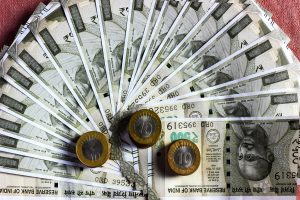January 30 is observed as Martyr’s Day to commemorate the death anniversary of Mahatma Gandhi. It is also recognized as the ‘World Leprosy Day’. This is not a mere coincidence.
Most of us would have seen the picture of Mahatma Gandhi taking care of Parchure Shastri in Sewagram. Parchure Shastri, an erudite scholar who had leprosy, lived near Gandhiji’s hut in the Sewagram Ashram. It was Gandhiji’s simple, firm belief in the service of leprosy patients that enabled Parchure Shastri to recover and subsequently even officiate as a priest at a wedding in the ashram. Ever since then, doctors, health care workers, Non- Governmental Organisations, international organisations, governments of states and union territories, as well as the Union Government have come together as Team Health India and scored remarkable achievements.
Advertisement
The prevalence of leprosy fell below 1/10,000population in December 2005. It further reduced to 0.41 in 2020-2021, which means that we had reached elimination levels of leprosy in December 2005. Since then, leprosy was no longer defined as a public health problem at a national level.
However, it is also important to accept that: We are yet to eradicate leprosy from our country. Even today, 57 per cent of the new cases worldwide are diagnosed in India. India has the maximum number of persons with disabilities related to leprosy. This is indicative of late diagnosis and treatment. Untreated patients still spread infection to healthy individuals in the community and, WHO has included leprosy in the list of neglected tropical diseases (NTDs), because it is not a part of the global health agenda.
Having said that, there are several individuals and organizations working for treatment and rehabilitation of leprosy patients in our country. While some have received appreciation, others have continued their work quietly without commensurate recognition. Born in 1926, Dr. Kothapalle Vedantha Desikan is one such extraordinary personality. The Influence of Gandhian philosophy and a desire to work for leprosy patients brought this young doctor to Sewagram in the early 1950s. Through the aegis of the Gandhi Memorial Leprosy Foundation, Dr. Desikan and his team carried out a house-to-house survey in 35 villages and established three clinics. They examined approximately 30,000 individuals and diagnosed around 550 leprosy patients.
The drug Dapsone had become available; and the strategy of survey, education and treatment (SET) for leprosy control proved to be remarkably effective. It was obvious that the SET programme was scientific, practical and a very effective method for control of leprosy. The Government of India eventually adopted it. The National Leprosy Control Programme was started in 1955 and the SET method became the standard procedure for leprosy control in the entire country.
Subsequently, WHO also endorsed the approach. In 1983, with the introduction of multidrug therapy, the National Leprosy Eradication Programme worked with renewed focus.
Today, the objectives of this programme are: To reduce Prevalence Rate to less than 1/10,000 population at subnational and district level, To ensure ‘Zero Grade II’ disability percentage among new cases at National level/Ensure ‘Zero GradeII’ disability cases per million population at National level, To achieve ‘Zero’ disabilities among new pediatric cases (children between 0-14 years) Zero stigma and discrimination against persons affected by leprosy.
These objectives are indisputable and ambitious. What remains to be seen is how to ensure that the challenges towards eradication of leprosy are addressed in a timely fashion. One way to meet these challenges is through the Prime Minister’s vision of establishing Ayushman Bharat Health and Wellness Centres across the country. The primary health care teams deployed at these centres have the capability of carrying out the task of leprosy eradication.
Work in this direction has already begun. ASHA workers, as members of the primary health care team, form a strong link between the community and the healthcare system. They undertake house-to-house surveys and questions related to signs and symptoms of leprosy have already been incorporated in the Community Based Assessment Checklist (CBAC form). The Ayushman Bharat Health and Wellness Centres established in line with the Prime Minister’s vision for Universal Health Care in India, need to be further strengthened with respect to leprosy management and care. This is necessary to ensure that the groundwork carried out by ASHA workers is not rendered futile.
The telemedicine initiative ‘e-sanjeevani’ can be expanded for continued follow-up and ensuring supply of medicines to the identified patients. Eradicating leprosy would also require establishing strong referral linkages with the secondary and tertiary levels of care for reducing disability and morbidity. Sustained supervision to ensure treatment adherence and monitoring would eventually determine successful outcomes.
Mahatma Gandhi rued the fact that Leprosy could not be controlled in his lifetime and I am certain Dr. Desikan has similar sentiments. The Sustainable Development Goals (Target 3.3) aim to end the epidemic of neglected tropical diseases by 2030. I believe that our very capable ‘Team Health India’, in partnership with our robust National Health Programmes, will make this a reality.
(The writer, an IAS officer, is Additional Secretary in the Ministry of Health and Family Welfare, Government of India and the nodal officer for the Covid-19 vaccination drive. The views expressed are personal.)











